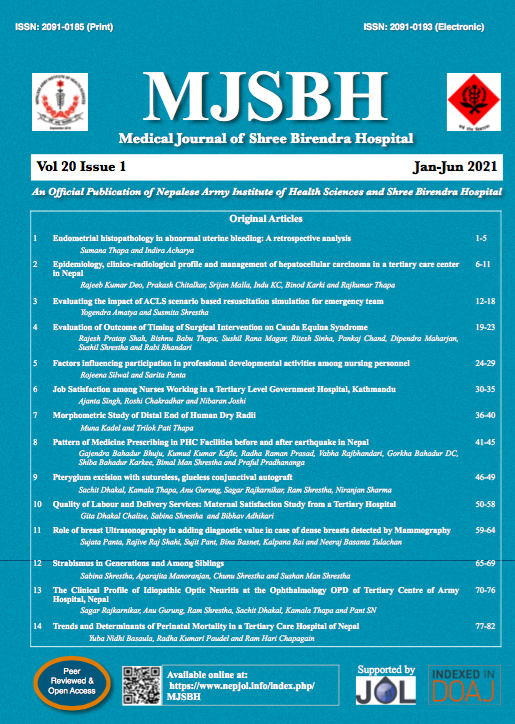Pattern of Medicine Prescribing in PHC Facilities before and after earthquake in Nepal
Keywords:
Health post; Health problem; National treatment guidelines; WHO drug use indicatorsAbstract
Introduction: On April and May 2015, Nepal experienced two earthquakes. Many studies have focused on acute care delivery, disease outbreaks, mental health issues, and disaster relief post-earthquakes. Few others have looked at psychiatric medication prescription and health aid distribution pattern, only one study has addressed the effects of an earthquake on medication prescribing patterns and compared them to the post earthquake setting. This paper aims to examine common health problems and prescribing practices before and after the earthquake.
Methods: This descriptive retrospective study was conducted within seven randomly selected health posts (HPs) located in the three most earthquake-affected districts of Bhaktapur, Kathmandu and Dhading. The patient records per month from each HP were selected from the out patient department (OPD) register by systematic random sampling for three months prior and three months after the earthquake. There were 584 and 654 encounters in the pre and post earthquake period respectively. Each patient record was analysed using WHO drug use indicators and national treatment guidelines.
Results: A significant decrease in encounters receiving antibiotics and cases receiving albendazole alone in worm infestation was found in the post-earthquake period. A significant increase in prescribing antibiotics in cases of common cold was found.
Conclusions: The common health problems were similar in both periods. However, prescribing practices were changed. As prescriptions related to mental health problems were lacking, there is a need for improving mental health education to the health workers.
Downloads
Downloads
Published
How to Cite
Issue
Section
License
This license enables reusers to distribute, remix, adapt, and build upon the material in any medium or format for noncommercial purposes only, and only so long as attribution is given to the creator.




